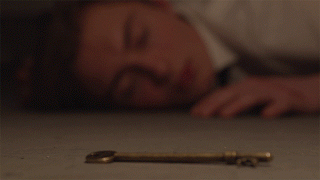Evaluation Question 2: How does your media product represent particular social groups?
My group and I chose to represent many particular social
groups within our thriller piece, particularly gender and social class.
However, in some aspects, we have used complete archetypes of these social
groups, to keep the audience entertained and help build tension and mystery.
We only have one character in our opening sequence, a man in
his early twenties. He is relatively tall, fair skinned, has blonde hair and
brown eyes, along with a slim figure. The majority of these characteristics fit
into the stereotype of a masculine figure. The typical stereotype would be
blonde/brown hair, blue eyes, fair skinned, with a tall slim figure. Our
particular character fits into the masculine genre, but is slightly unique,
enticing the audience into something different from the typical image of a
hero. We wanted to send an image of a young man working for a secret service in
espionage.
The image of an espionage type figure is emphasised through
the use of the suit as costume. The suit represents a higher-class status and
produces a smart and professional look. This is generally what an audience
member would see the spy wear in an espionage film. The clean-cut suit suggests that he thinks of
his occupation with respect, and is wealthy enough to buy a smart looking
piece. In addition to this, the suit also represents a masculine figure; it’s
fitting and powerful looking, suggesting a masculine dominant figure.
The messy and skewed tie suggests that the protagonist has
been involved in some action, which may include physical violence. This is a
representation of a stereotypical man, as the protagonist is violent and
dominant. However, this is an archetype for our presentation of a high-class
character; members of the higher social status are stereotypically viewed to
take pride in their appearance. In this
instance, our protagonist has more important priorities on his mind than his
appearance. Similarly, the violent and
dominant presentation is displayed through the many bloodstains splattered on
the shirt, face and knuckles. This clearly shows the physical violence that has
taken place prior the sequence, and therefore shows the protagonist to be a
powerful and strong character.
 |
| The mise-en-scene: Costume, makeup and old-fashioned keys |
We used fast paced cuts when editing the sequence, to build
up a sense of panic and tension. This shows the character to be frantic and
scared, the archetype of a masculine and calm heroic male figure. Additionally,
we used fast shots to exaggerate this panic. For instance, we used a fast pan
to show the audience what the protagonist is looking at. The speed of this shot
suggests that he is frantic and stressed to find the right key. This goes
against the typical conventions that we see in a stereotypical man, who is
usually seen as a calm and cunning hero.
We directed our actor to be really frustrated and anxious
about the situation, which resulted in lots of swearing and shouting. This
dialogue is very frequent throughout the sequence and it is very clear that he
is under extreme stress. This represents men to be verbally violent and
masculine, as it is viewed that men swear generally more than women; but also
he is under incredible pressure, and doesn’t handle the situation well. The
lack of calmness towards the problem represents the protagonist as an archetype
of typical male characteristics: which is to be calm and controlled in a
stressful situation as they are the dominant figure. Additionally, people of a high status are also
seen as to be powerful and dominant, meaning that they may too be calmer in
stressful situations. This ironically contrasts with the conventions shown
through the protagonist, who’s dressed like a high-class member yet he
certainly is not acting like one.
 |
| It is clear through his facial expressions and dialogue that he is frustrated |
Additionally, the dialogue is very colloquial and more
common than mature language. This suggests that the protagonist comes from a more
common working class background, as his dialect is similar to theirs.
We included a long shot, which is angled slightly higher
than eye level. This is when the protagonist turns around and rattles the door
for the first time. This high angle shot also shows the whole set full of keys
compared to the protagonist. The scale of the protagonist against the keys
displays him in a weak position, as he looks smaller. Furthermore, the high
angle of the shot shows the protagonist to look weak and submissive, a contrast
to the conventions people normally think of in a man: strong and dominant.
We also chose to place a drip sound effect, and added reverb
to make it sound like there is a leak in the prison. This dripping sound effect
connotes images of a dirty, unmaintained, and cheap surrounding, which
contrasts against the stereotypical high-class look of the protagonist.
Typically, people think of high-class members to be in clean and
well-maintained wealthy environments.
Tags:
a1
evaluation












0 comments